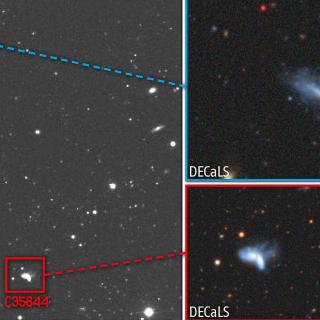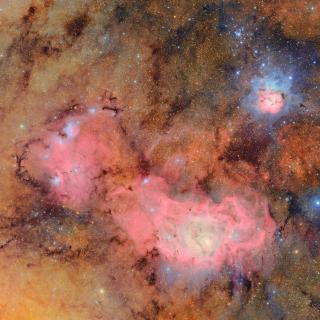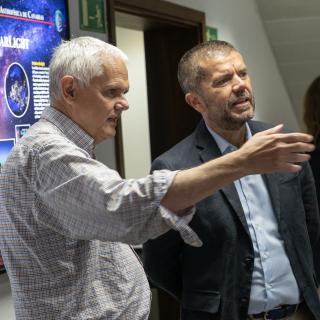OTELO, which is an acronym for “OSIRIS Tunable Emission Line Object survey” is the deepest census of galaxies with emission lines which has been performed until now. This census, which contains over 11,000 galaxies has been made using OSIRIS (Optical System for Imaging and low-Intermediate-Resolution Integrated Spectroscopy) an imager-spectrograph on the Gran Telescopio Canarias (GTC). The GTC is currently the largest fully steerable optical and infrared telescope in the world, with its primary mirror of 10.4m diameter, so it is ideal for observing the depths of the universe.
“OTELO was aimed at detecting a hypothetical population of galaxies hitherto unobservable. These are objects which could not be seen in other surveys of galaxies, but which appear in the images obtained with OSIRIS, thanks to the use of tuneable filters, which make it unique among telescopes in the 8-10 metre class” explains Jordi Cepa, the Principal Investigator of this survey, whose first results will be published in the journal Astronomy and Astrophysics.
The tuneable filters of OSIRIS allow us to detect galaxies with emission lines, that is those galaxies which contain ionized gas (as do the low consumption lamps in our homes). This gas can be ionized by stars in formation with masses much greater than that of the Sun, or by the violent processes around the supermassive black holes in the centres of the galaxies. A fraction of these galaxies, however, do not emit enough light to be detected using conventional filters, so that they have remained undiscovered until now. Without a complete survey it would not be possible to study the properties of the galaxies, just as it would not be possible to study the evolution of human beings if we could only study people older than 50.
Built at the IAC, in collaboration with Mexico, OSIRIS observes the sky in the optical range of the spectrum, that is with the light which the human eye can see, although extended at the edge of its range into the near infrared and the near ultraviolet. From the Roque de los Muchachos Observatory (Garafía, La Palma) this instrument has been capable of discovering this population of galaxies whose analysis could change our present understanding of the formation and evolution of galaxies.
The OTELO project involves researchers from a number of institutions in Spain (Instituto de Astrofísica de Canarias, Instituto de Astrofísica de Andalucía-CSIC, IFCA-Universidad de Cantabria, Centro de Astrobiología (INTA-CSIC), ISDEFE and Universidad Complutense de Madrid) and in other countries (Mexico, ESO-Chile, Denmark, Canada and Australia).
It has been funded by the Ministry of Economy and Competitivity (MINECO) via the projects AYA2013-46724-P, AYA2014-58861-C3-1-P, AYA2014-58861-C3-2-P, AYA2014-58861-C3-3-P, AYA2016-75808-R, AYA2016-75931-C2-2-P, AYA2017-88007-C3-1-P y AYA2017-88007-C3-2-P.
Scientific articles: The OTELO survey: I. Presentation, data reduction and multiwavelength catalogue, The OTELO survey: II. The impact of Tunable Filters in narrow band surveys.
Contact at the IAC: Jordi Cepa (jcn [at] iac.es (jcn[at]iac[dot]es))



